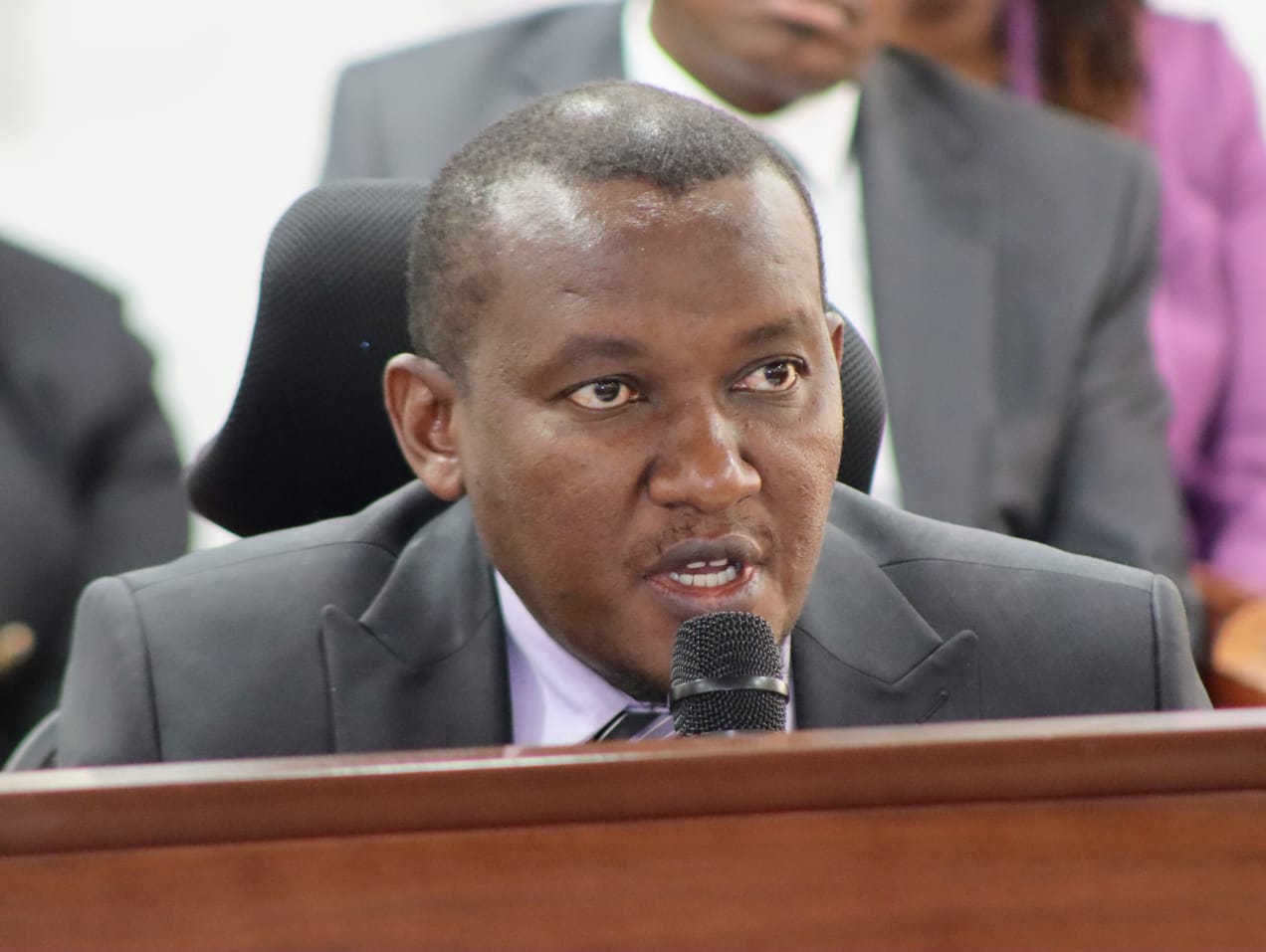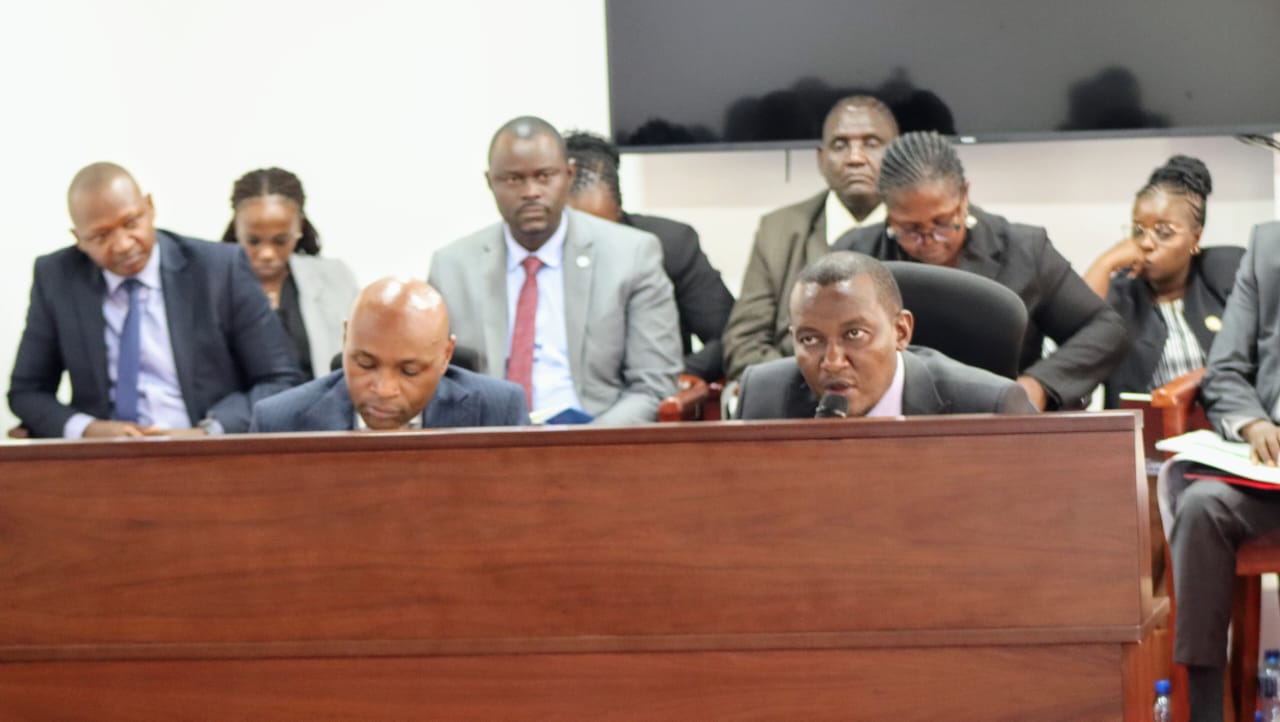Maize prices soar amid dwindling NCPB supplies
Middlemen have increased prices to as high as Sh3,700 per 90kg bag in two weeks.
Kenya's annual rice consumption is over one million metric tonnes
In Summary
 Principal Secretary for Irrigation, Ephantus Kimotho/HANDOUT
Principal Secretary for Irrigation, Ephantus Kimotho/HANDOUT
Kenya will stop the importation of rice in 2032 once all the ongoing irrigation projects are complete, the Principal Secretary for Irrigation, Ephantus Kimotho, has said.
The country has an estimated annual rice deficit of 770,000 metric tonnes with the growing appetite for the popular staple by households far outweighing local production.
This has seen the country spend about $300 million (Sh38.83 billion) annually to plug in that deficit, according to Kilimo Trust Kenya.
Data from the Kenya National Bureau of Statistics (KNBS) shows that Kenya's annual rice consumption is over one million metric tonnes, while the production capacity is approximately 230,000 metric tonnes.
According to the PS, the completion of the Bura irrigation project, the gravity intake, and the 26 kilometre canal that are set to be commissioned this week will save tax payers Sh120 million annually.
“When Kenya Kwanza came to power, the country was producing 190,000 metric Tonnes of rice, which has since increased to 270,000 metric tonnes following the completion of the Thiba Dam, expanding acreage under irrigation for the Mwea irrigation development project and double cropping,” said Kimotho.
 Principal Secretary for Irrigation, Ephantus Kimotho/HANDOUT
Principal Secretary for Irrigation, Ephantus Kimotho/HANDOUT
The ministry also announced plans for Public-Private Partnership (PPP) projects that will see the Galana Kulalu Food Security Project, where a private investor will begin farming on 5,400 acres in April 2025.
The Galana Dam will subsequently increase farming for Galana Kulalu to 200,000 acres. This follows successful trials on 538 acres, which yielded 35 bags per acre. To this far, Galana Kulalu has two (2) private parties interested in farming Selu Ltd (20,000 acres) and Al Dahra Group (180,000).
Al-Dahra is a prominent multinational leader in agribusiness with over 400 thousand acres of agricultural land in Egypt, Romania, Serbia, and USA.
"On February 13, 2025 AL Dahra signed an MOU with National Irrigation Authority and Agricultural Development Corporation (ADC) allowing them do technical studies. Other key PPP projects in progress include the Galana Dam; Thuci Dam in Embu County; High Grand Falls Dam project, which spans Kitui, Tharaka Nithi, and Tana River counties and is expected to break ground later this year,” he said.
Some of the other projects that were scheduled to be complete in the current financial year but will have to be complete in the coming 2025/26 financial year, due to inadequate funding, include the Siyoi-Muruny Dam in West Pokot and Water Supply Project (77 per cent complete), the Umaa Dam in Kitui County (74per cent) complete), and the Lower Nzoia Irrigation Infrastructure Project (75per cent) complete).
Other are Mwache dam in kilifi county which is expected to supply clean water in Mombasa Counties is 22 per cent complete and the major challenges which included the resettlement action plans has been resolved allowing dam construction in the main area.
According to Kimotho, the overall budget requirement for the State Department of Irrigation for the next financial year, 2025/26, stands at Sh50.75 billion. However, only Sh18.863 billion has been allocated in the budget policy statement, leaving a deficit of Sh31.886 billion.
The recurrent budget faces a shortfall of Sh342 million, with a requirement of Sh1.761 billion against an allocation of Sh1.419 million. Meanwhile, the development budget requires Sh48.988 billion but has been allocated only Sh17.444 billion, leaving a shortfall of Sh31.544 billion.
Of this, Sh25.617 billion is a gap in government funding, while Sh5.927 billion is required from development partners. According to the PS in the 2025/26 fiscal year, the ministry will rehabilitate 18,500 acres in Bura, expanding irrigation by 34,900 acres, and completing the Mwache Dam by 2027.
Other projects will include licensing 320 irrigation schemes, equipping 70 schools with irrigation facilities, and increasing water storage by 13.3 million cubic meters.
The government also plans to complete the Siyoi Muruny and Umaa Dams, boosting irrigation capacity by over 10 billion liters, while enhancing flood control through new dikes and check dams.
Middlemen have increased prices to as high as Sh3,700 per 90kg bag in two weeks.